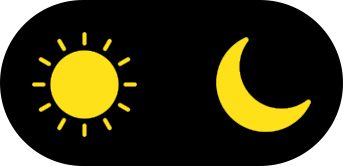The amount of fish you can safely and legally keep in your system (fish welfare) depends on many factors. There would be, among other things:
- Feed rate / quantity / feed type
- Pump performance and reservoir size/circulation speed
- Amount of water or nutrient solution
- Water temperature
- water flow
- Oxygen content
- Nitrite and nitrate content
- Number of plants in the bed or in the hydroponic system
- Volume of the plant bed or amount of nutrient solution
- Fish species or species
- Aquarium size
Not all the decisive factors are mentioned here!
In smaller systems but beyond your own needs , you can expect around 10-12 fish in a 1000 liter aquarium = 1m 3 = 1 IBC container (open at the top).
Be sure to consult with an official veterinarian about the legal regulations before building the fish farm. These change regularly!
Here are the regulations, some of which come from breeding in ponds because the legislature has not yet derived all the regulations for aquaponics:
Stocking densities according to EU organic aquaculture regulations:
Salmonids in freshwater:
Trout (Salmo trutta) - Rainbow trout (Oncorhynchus mykiss) - Brown trout (Salvelinus fontinalis) - Salmon (Salmo salar)
- Arctic char (Salvelinus alpinus) - Grayling (Thymallus thymallus) - American arctic char (Salvelinus namaycush) -
Huchen (Hucho hoo)
Production system: Production must take place in open systems. The water change rate must ensure an oxygen saturation of at least 60%, be tailored to the needs of the animals and ensure sufficient drainage of the water in the holding area.
Maximum stocking density
Salmonids other than those listed below: less than 15 kg/m 3
Salmon: 20 kg/m 3
Brown trout and rainbow trout: 25 kg/m 3
Arctic char: 20 kg/m 3
Sturgeon (Acipenseridae) in freshwater
production system: The water flow in each housing unit must meet the physiological needs of the animals.
The outgoing water must be of equivalent quality to the incoming water.
Maximum stocking density 30 kg/ m3
Carp fish (Cyprinidae) and other associated species in polyculture, including perch, pike, catfish, pike, sturgeon.
In fish ponds, which are completely drained at regular intervals, and in lakes. Lakes must be used exclusively for organic production, including agriculture in their dry areas. The fishing area must have an inflow of fresh water and be large enough so that the animals' well-being is not impaired. After harvesting, the fish are kept in fresh water.
Flag shrimp (Penaeidae) and freshwater shrimp (Macrobrachium spp)
Establishment of production units: Settlement in areas with infertile clay soils to minimize the environmental impact of pond construction. Pond construction with the existing clay. The destruction of mangrove stands is not permitted.
Transition time Six months per pond, corresponding to the usual lifespan of shrimp in aquaculture
Origin of the parents: At least half of the parents must come from offspring after three years of operation of the facility. The remaining parent stock must come from pathogen-free wild stocks from sustainable fishing. The first and second generations must be screened before being introduced into the systems.
Removal of eyestalks is prohibited
Maximum stocking densities and production quantities
Cultivation: maximum 22 postlarvae/m 2
Maximum density: 240 g/m 2
Milkfish (Chanos chanos), cichlids (Oreochromis sp.), shark catfish (Pangasius sp.)
Production systems Ponds and net cages
Maximum stocking density
Shark catfish: 10 kg/m 3
Cichlids: 20 kg/m 3
Sources include: https://eur-lex.europa.eu/LexUriServ/LexUriServ.do?uri=OJ:L:2009:204:0015:0034:DE:PDF
Context:




